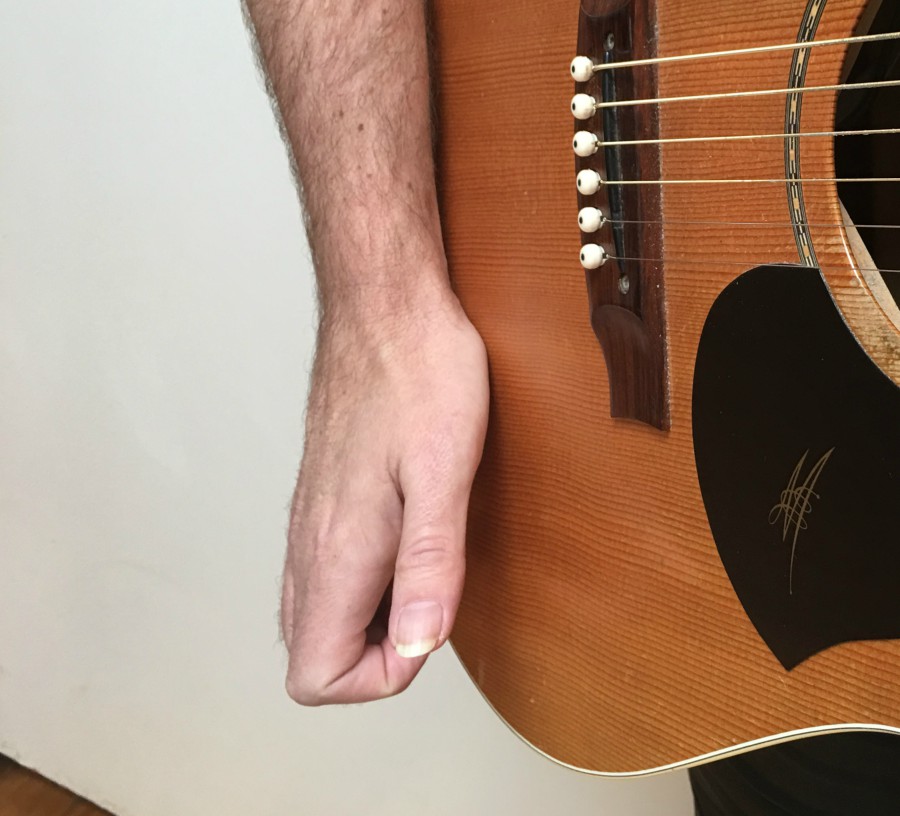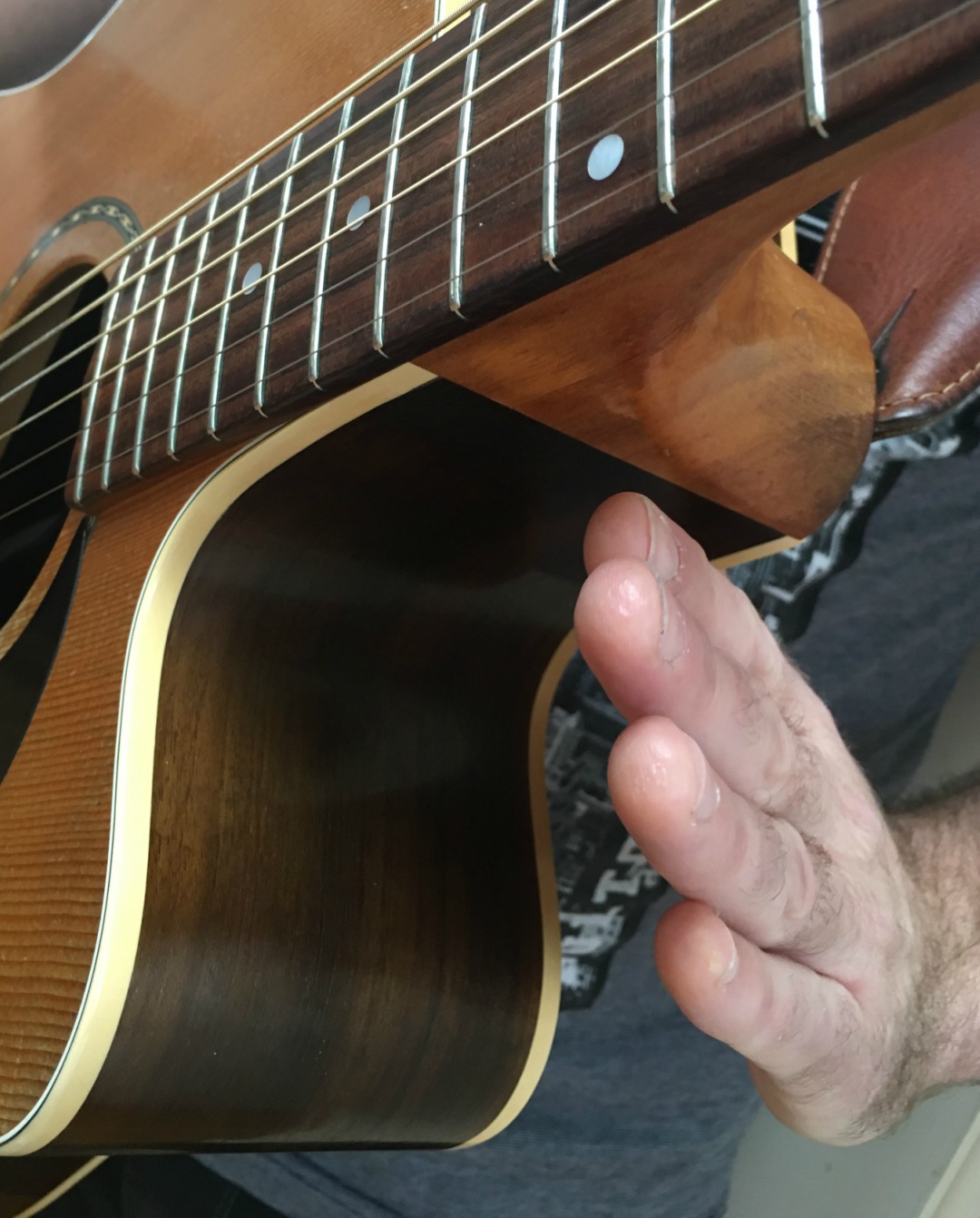Percussive Guitar Made Easy! How To Be Up And Playing This Style In Just A Short Amount Of Time
by Simon Candy Musician And Guitar InstructorThere was a time when playing your acoustic guitar percussively was almost unheard of. Nowadays it is very popular to do. A youtube search alone will show you this. However as popular as it has become, it has not become any less impressive or fun to do!
To anyone who has been living under a rock, playing your guitar percussively involves you hitting various parts of the body of your guitar to create cool beats and grooves.
No doubt you’ve seen a guitar played this way before, and no doubt you’ve been blown away, but at the same time thought, there is no way I could do that.
Well I am here to say yes, you absolutely can play your guitar percussively. Sure it’s a challenging style, and to master it takes many hours of dedicated practice over a long period of time.
However, today I am going to show you some basics that you can get into your playing very quickly, with just a little practice. Just because these are basics, don't mistake that for meaning that what you play will sound simple and boring.
Instead, I am going to present to you several different percussive guitar elements that we will then mix together to create beats and grooves on your guitar.
In addition to this, you will also then take those beats and grooves and play them while playing a chord progression on your guitar all at the same time!
Sound hard?
It’s not. Let me show you how . . . . .
Percussive Guitar Techniques
The first step you need to take is to work on a number of percussive techniques in isolation. This is of the upmost importance. You cannot expect yourself to be able to play your acoustic guitar both percussively and melodically, with everything it entails, without first breaking things down.
So let’s begin by doing exactly that, and look at a number of common percussive guitar techniques in isolation.
Muted Slap (M.S.)
To execute this percussive technique, you need to slap the side of your picking hand thumb on the lower strings of your guitar like so:

Whether you end up slapping 1, 2, or 3 strings does not really matter. It’s the sound you are after, much like that of a high hat symbol on a drum kit. Check the picture for reference and watch me demonstrate this technique in the video that accompanies this article.

The muted slap is indicated with an “x” on the bottom string of the tablature.
Focus on the following when practicing this technique:
- A relaxed arm, wrist, and hand
- Immediately relaxing as your thumb hits the strings of the guitar. Your not hammering a nail into the wall, so don't slap the strings like you are
Bass Drum 1 Hit: Thumb (B.T.)
This particular percussive technique resembles that of a bass or kick drum sound on a drum kit. In fact we will look at two ways of doing this, the first using your thumb in the exact same way you just did for the muted slap, only this time you are slapping it on the body go your guitar instead of the strings.

Once again check the picture for reference and watch the video for a demonstration of this technique.

The bass drum hit is notated in the first space of the musical stave.
Focus on the following when practicing this technique:
- A relaxed arm, wrist, and hand
- A flick of your wrist as you slap the body of the guitar with your thumb. A lot of percussive techniques are executed this way
Bass Drum 2 Hit: Heel Of Hand (B.H.)
The other bass/kick drum sound is achieved by hitting the body of your guitar with the heel off your picking hand like so:

By using the heel of your hand you get more of a thud like sound. This technique is also notated in the first space of the musical stave.
Check the picture for reference and watch the video for a demonstration of this technique.

Focus on the following when practicing this technique:
- Not hitting the body of your guitar too hard with the heel of the hand, as you could do significant damage, depending on your guitar
- Making sure the heel of your hand connects with the body of the guitar
Snare/Rim Shot Hit (S)
A great way to emulate a snare or rimshot hit is to tap/rap two of the fingers of your picking hand around the side of the body of your guitar like this:

You are after a high end popping sound with this technique. I personally like to use my pinky and ring fingers when tapping the side of the guitar, you may prefer your ring and middle fingers. Either combination is ok.

This percussive technique is notated in the third space of the stave.
Focus on the following when practicing this technique:
- A relaxed arm, wrist, and hand
- To achieve the snare/rimshot like sound, you need to make sure the base of the two fingers you are using to tap the side of the guitar land flush with the edge of the body. Check the picture for reference and watch me demonstrate this technique in detail in the accompanying video
- Flicking/rotating your wrist as you execute this technique
Fret Hand Hit (F.H.)
Now it’s time to bring our fretting hand into the picture. Simply hit the side of the body of your guitar just below the neck to execute this technique. Another variation is to hit the front of the body just below the fretboard.

I have also notated this technique in the 3rd space of the stave, as I reference the sound of this hit with that of a snare drum.
Check the picture for reference and watch the video for a demonstration of this technique.

Focus on the following when practicing this technique:
- A relaxed arm, wrist, and hand
- Getting your fretting hand into position to perform the hit and returning to continue playing whatever it is you are doing. Not too difficult, but may take a little practice to get this going fluently
Creating Beats And Grooves From Your Percussive Techniques
Here are 3 cool beats and grooves you can create by combining some of the percussive techniques we have just been looking at. There are many other variations possible, so once you have the following down, start creating your own.
Beat/Groove 1:
Here is a rock beat created by utilising both the bass drum 2 hit (B.H) and snare/rimshot hit (S):

In the example above, I am using the heel of my hand to hit the body of the guitar on beats 1 and 3, and my pinky and ring fingers to tap the side of my guitar on beats 2 and 4 to create the snare/rimshot sound.
Simple but very effective!
Beat/Groove 2:
Beat 2 is the same as the rock beat only adding thumb slaps on the body of the guitar on the offbeats of 1 and 3 like so:

Beat/Groove 3:
This third beat brings the fretting hand into action with a fret hand hit. This occurs on the offbeats of 2 and 4 and creates a straight 8th note rhythm overall:

As was the case in first becoming familiar with each percussive technique in isolation, it is the same with each of these 3 beats/grooves. Spend time on each before moving on with what we are about to do, making sure you get each down fluently and comfortably.
Adding A Percussive Beat With A Chord Progression
Now it’s time to add a percussive beat to a simple two chord vamp to really step things up!
Let me show you first before breaking it down for you:

Focus on the following when practicing this technique:
- Playing slowly and breaking the example up into small manageable portions for your brain to process. This is so important to do, so do not skip this vital step!
- Separating the melodic part with the percussive part. Both are actually quite simple in isolation, and will make this example so much easier to play by doing exactly this
- There is a bit going on in the last bar, so be sure to spend time here working your way through it. One technique I use here is what is known as a harmonic slap. To get this sound, simply slap your middle finger across the 12th fret for a bell like chime. Check the picture for reference and watch the video to see me break this part down in detail

- Keeping a relaxed arm, wrist, and hand throughout
Learn more awesome percussive guitar techniques for your playing
About the author: A highly experienced and sought after guitar instructor from Melbourne, Australia, Simon Candy specialises in all things acoustic guitar. Teaching in the styles of blues, rock, jazz, and fingerpicking, to name a few, Simon also offers online instruction for acoustic guitar
Sponsor Ads
Created on Mar 9th 2018 02:51. Viewed 573 times.



